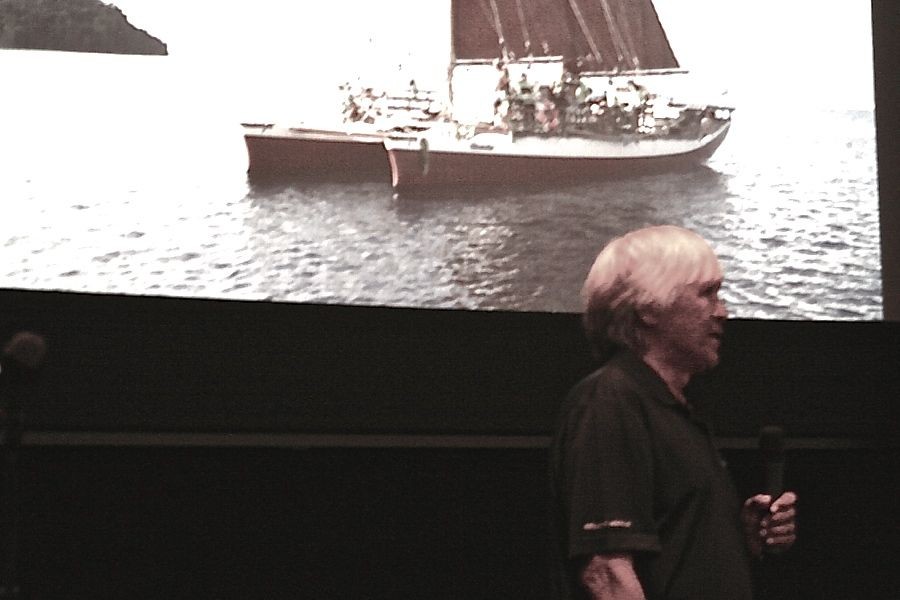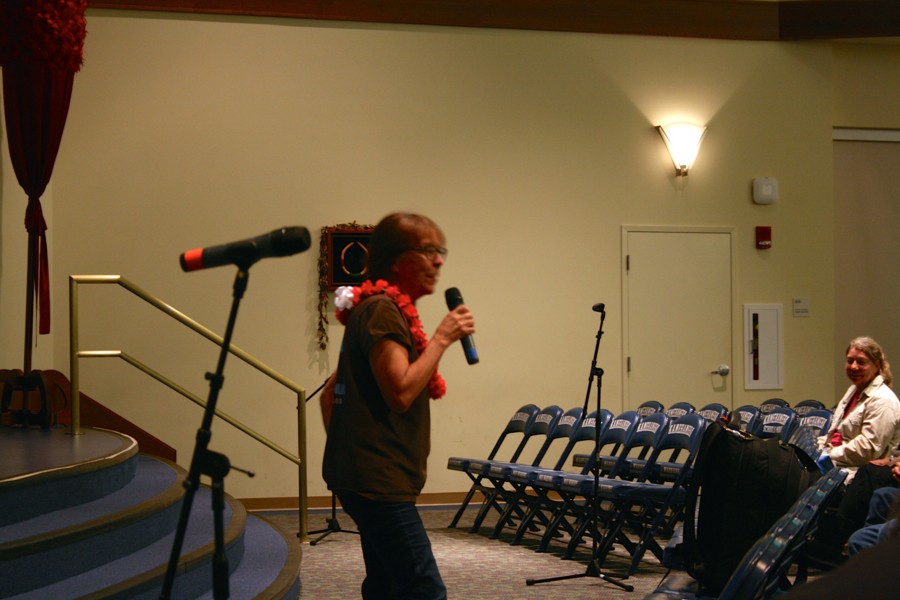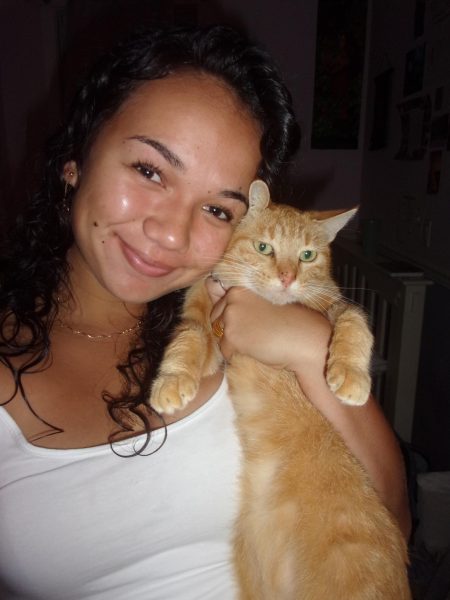Hokule’a crew members share mana’o
Photo by Kainoa Deguilmo
Lahaina native Snake Ah Hee talks about his past experiences on the Hōkūle’a at ʻMālama Honua,ʻ a free public lecture at Keōpūolani Hale, March 12, 2015. He joined the original crew on their return voyage from Tahiti in 1976. Other crew members from the Hōkūle’a’s current worldwide voyage were on hand to share their mana’o as well.
March 16, 2015
Thursday night, March 12, was filled with mana’o from crew members of the Hōkūleʻa’s recent voyage. This crew visited all the islands in the Polynesian Triangle and had the opportunity to share their aloha with their extended ʻohana. Kaimana Barcase explained the meaning behind the legendary voyage.
“It’s about being able to connect with those who have gone on the voyage before us on,” he said, “to realize how akamai our kupuna were.”
Barcase was on the leg two crew that sailed the Polynesian Triangle. Their group traveled from Tahiti, to the Cook Islands, and on to American Samoa.
“For me, this was just like a backyard for me, and I really got to understand our extended ʻohana,” Barcase explained. “I just want to spread our aloha to the extended ʻohana. I’m so used to the Pacific and Polynesian triangle, so I don’t think the full effect of this trip will really hit me until I travel outside of this area.”
It was also heart-changing for Bacarse to see other places and islands.
“When you see an island running out of water, or running out of land, it changes you,” he said. “It took all the people in this world to mess it up, and it’s gonna take all of them to clean it.”
Mark Ellis was a crew member who sailed on Hikianalia, another modified canoe that trailed the Hōkūleʻa and provided it with extra resources and supplies. He was in leg four, and his group started in American Samoa for training, and finished at Aotearoa. While in Samoa, his group learned to read patterns of weather in the sky and how to use stars to navigate. The Hōkūleʻa means much to him.
“For me, the Hōkūle’a represents family, and the importance of it is that it supports the culture, the tradition and the future of the youth,” Ellis said. “The way I look at it, it’s a way to solve complex and modern problems with the knowledge and wisdom our kupuna used.”
The term family is well represented in the voyage of the Hōkūleʻa. This canoe helps strengthen other cultures, by showing them respect and spreading aloha.
“The implication is family and to learn from the wisdom and knowledge of those before us,” Ellis said. “It also helps cherish upcoming ʻohana. It’s important to give them a bright future. Our goal is to leave earth a better place than we found it.”



